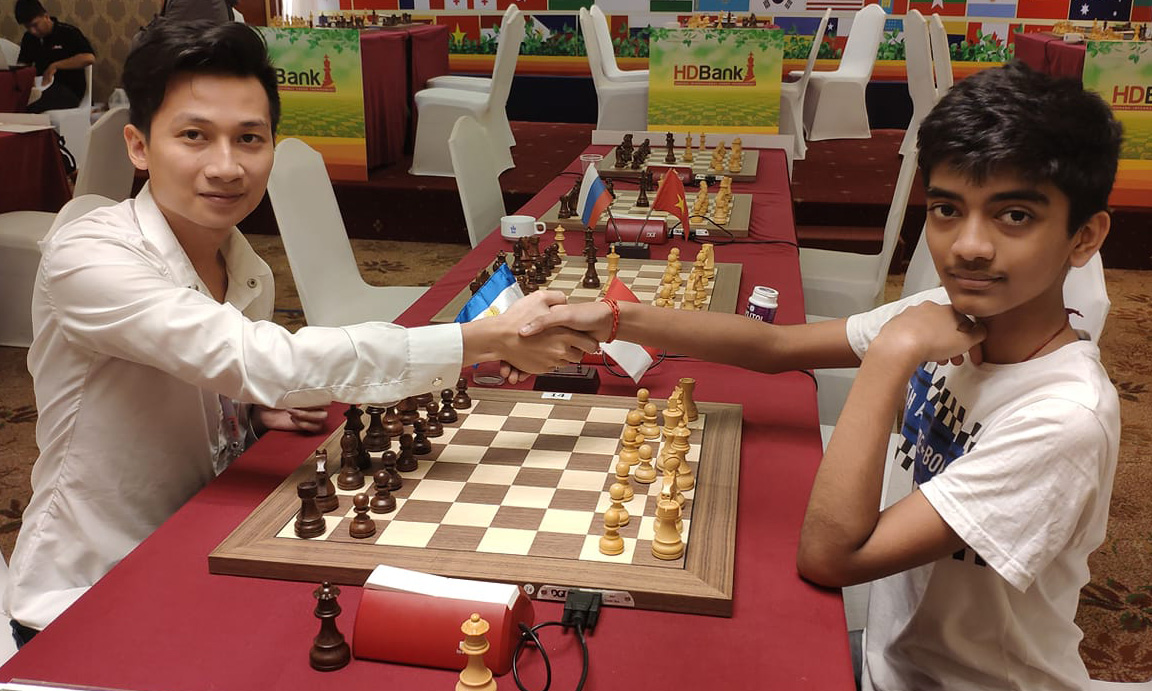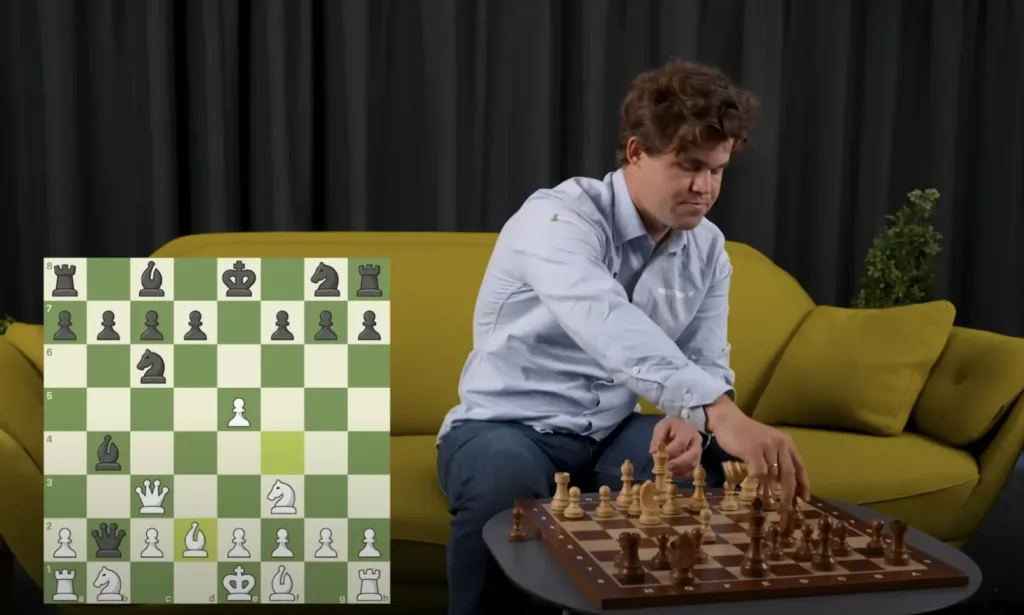Magnus Carlsen once fell for a basic trap in the dubious Englund Gambit. He was 8½. Here’s how the world champ learned his lesson, and never repeated it.
How Magnus Carlsen Fell for the Englund Gambit, and Never Forgot It
Long before he was World Champion, before he conquered super tournaments and arenas, Magnus Carlsen was just an 8½-year-old kid playing his first-ever classical tournament game. And he got completely swindled.
In a moment that stayed with him for decades, Carlsen fell victim to one of chess’s most infamous (and frankly ridiculous) traps, the Englund Gambit. Here’s how Magnus told the story in his own words:
“I don’t remember the first opening trap I ever learned about, but I do remember the first classical tournament game I played — which also happened to be my first tournament game ever. And unfortunately, it featured a trap that I fell right into.”
“So, it goes like this. This is called the Englund Gambit. Terrible opening. Don’t play it.”
“It starts with 1.d4 e5. The idea for Black is to sacrifice the pawn and then try to regain it quickly.”
“At this point, I was about 8 and a half years old. I had never seen this opening before. So I chose to defend the pawn with the bishop, which, to be fair, is an excellent move.”
“Then comes the point. Black checks with the queen. Now, if White blocks with the bishop, White is generally much better.”
“(Again, don’t try this at home.) But I didn’t do that.”
“I blocked with my queen. And now, sadly, once Black takes the pawn, White is already lost.”
“I don’t know what I was thinking. Maybe it was something like: ‘Bring out the queen, don’t move the same piece twice,’ etc. Evidently, I didn’t think enough.”
“Now the rook is trapped. If you try to protect the rook, just like in Harry Potter, the bishop comes out and pins the queen.”
“And if that isn’t bad enough, White, trying not to lose both the queen and the rook, will probably try to go back with the bishop… then Black takes the queen, White takes back with the bishop to protect the rook… and this is a most embarrassing checkmate.”
“I don’t remember exactly how I lost. But I did lose the game, swiftly. And I never fell for this trap again.”
“And I hope you don’t either.”
A Quick Look at the Englund Gambit
The Englund Gambit, starting with 1.d4 e5?!, is rarely seen in top-level play and widely considered dubious. It sacrifices a central pawn immediately for quick piece activity and cheap tactical tricks, including the one young Magnus Carlsen fell for.
Chess author Boris Avrukh once called 1…e5 the “worst possible reply to White’s first move.” Still, it’s popular in amateur blitz games, exactly where traps like the one Carlsen described can do serious damage. Here’s how a 2900 online rated player stumbled into this trap:
In Carlsen’s case, he tried to parry an early queen check with his own queen – a natural but fatal mistake. The follow-up? A rook trapped, a queen pinned, and a mate to remember.
The Lesson
Everyone starts somewhere, and even the greatest players of all time make beginner mistakes, just once. For Carlsen, the Englund Gambit became an unforgettable warning:
Don’t trust suspicious gambits. Don’t bring the queen out too early. And above all, always check for traps.
Because yes, even an 8½-year-old Magnus Carlsen can get caught in one.

I’m Xuan Binh, the founder of Attacking Chess, and the Deputy Head of Communications at the Vietnam Chess Federation (VCF). My chess.com and lichess rating is above 2300. Send me a challenge or message via Lichess. Follow me on Twitter (X) or Facebook.

